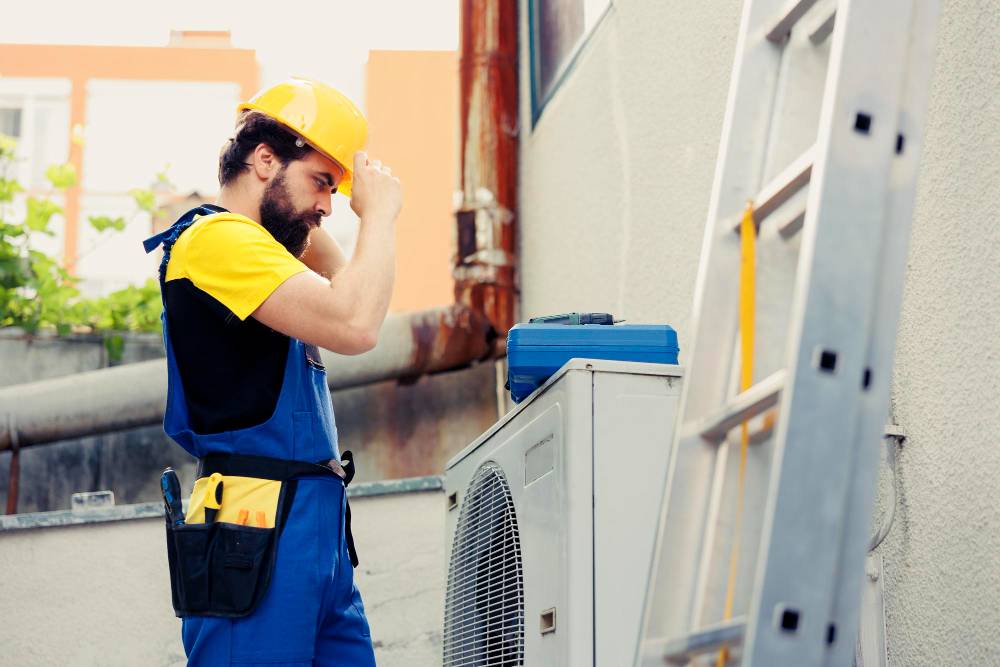Introduction
Preventive building maintenance programs are structured approaches designed to ensure that all aspects of a building are regularly checked, serviced, and repaired before issues arise.
Instead of waiting for equipment to fail or infrastructure to deteriorate, preventive maintenance focuses on early intervention, minimizing risks, and reducing overall costs.
A well-maintained building not only enhances safety and efficiency but also boosts the property’s long-term value.
By proactively addressing maintenance needs, businesses can avoid sudden breakdowns that could disrupt operations and lead to costly emergency repairs.
Implementing a structured maintenance program also ensures compliance with regulatory standards, reducing the risk of legal issues and potential fines.
Key Components of Preventive Maintenance
Preventive maintenance includes a variety of activities designed to maintain the health of a building. Here are the essential components:
Regular Inspections and Assessments
Routine building inspections help detect potential issues early, such as leaks, electrical problems, or structural weaknesses.
Conducting these assessments ensures that minor concerns are addressed before they become significant problems.
Trained professionals can examine every aspect of the building, from the foundation to the roof, ensuring no defects go unnoticed.
Scheduled Servicing and Repairs
Equipment and systems should be regularly serviced to prevent unexpected failures. Scheduled maintenance includes checking HVAC systems, elevators, plumbing, and electrical systems. Regular servicing also ensures that all building systems operate at peak efficiency, reducing downtime and preventing disruptions in commercial or residential spaces.
Equipment and System Upgrades
Upgrading old systems, like HVAC units and lighting, improves energy efficiency and reduces operational costs.
Aging infrastructure can lead to increased energy consumption and higher utility bills. Property owners can significantly cut costs by integrating modern, energy-efficient technologies while ensuring sustainability.

Emergency Preparedness
Emergency systems, such as fire alarms and backup generators, ensure safety and business continuity.
Preventive maintenance includes regular testing of fire safety systems, emergency lighting, and security alarms to guarantee their functionality in case of an emergency.
Advantages of Preventive Maintenance Programs
Cost Savings
Preventive maintenance significantly reduces costs by:
- Minimizing emergency repairs, which are often more expensive than scheduled maintenance tasks. Addressing small issues early can prevent major malfunctions that require costly fixes.
- Extending the lifespan of key building components by reducing wear and tear on essential systems, ultimately delaying the need for replacements.
- Reducing energy waste by ensuring systems operate efficiently, lowering utility bills, and contributing to sustainability goals.
Enhanced Safety and Compliance
- Prevents hazards such as electrical fires, mold growth, and structural failures by keeping all systems in optimal condition.
- Ensures buildings comply with health and safety regulations, preventing legal issues and ensuring the well-being of occupants.
- Protects employees, tenants, and assets from unforeseen risks by maintaining secure and well-functioning infrastructure.
Improved Building Efficiency
- Maintains proper HVAC, plumbing, and electrical functions, reducing unexpected failures.
- Reduces downtime and enhances productivity in commercial spaces, ensuring businesses run smoothly without maintenance-related disruptions.
- Creates a comfortable and safe indoor environment, improving tenant satisfaction and employee productivity.
Higher Property Value
- A well-maintained property retains its curb appeal and value, attracting potential tenants and buyers.
- Buildings with regular upkeep are more attractive to investors and leasing companies.
- Prevents costly depreciation due to neglect, ensuring long-term financial stability.
Common Preventive Maintenance Tasks
- Roof inspections to prevent leaks and structural damage.
- HVAC system maintenance to ensure energy efficiency and air quality.
- Plumbing checks to prevent leaks and water damage.
- Electrical system inspections to reduce fire hazards.
- Fire safety equipment testing to ensure compliance with regulations.
Technology and Preventive Maintenance
Advancements in technology are revolutionizing preventive maintenance:
- Predictive analytics helps identify potential issues before they occur.
- Smart sensors and IoT devices monitor system performance in real-time.
- Maintenance management software automates scheduling and record-keeping, improving efficiency.
Conclusion
A well-structured preventive maintenance program is more than just routine upkeep—it’s a strategic investment in your building’s longevity, safety, and efficiency.
By proactively addressing potential issues before they escalate, businesses can significantly reduce repair costs, improve operational performance, and maintain a high-quality environment for occupants.
Beyond cost savings, preventive maintenance ensures compliance with safety regulations, enhances energy efficiency, and boosts property value.
Organizations can achieve long-term sustainability and operational excellence with the right approach, leveraging technology, skilled personnel, and a structured maintenance plan.
Don’t wait for problems to arise. Today, implement a preventive maintenance program that safeguards your building’s future.




